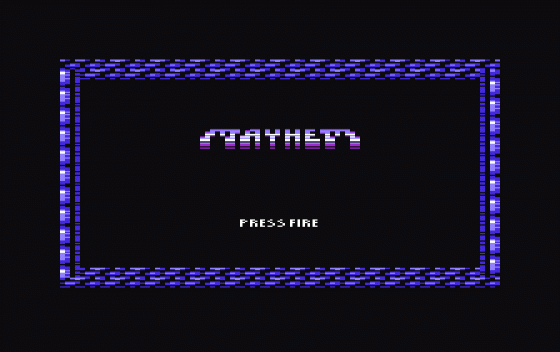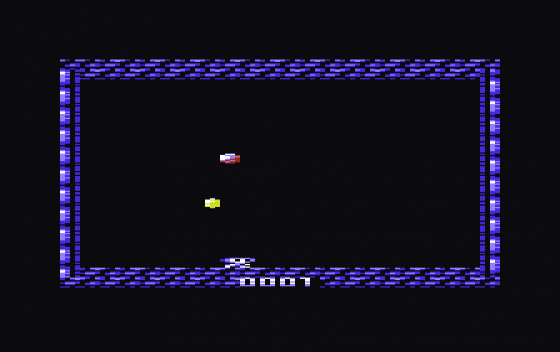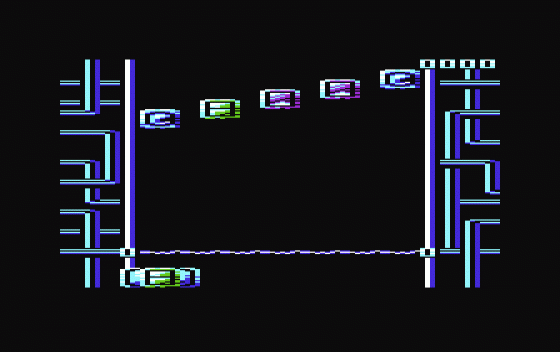
Micro Mart
 30th September 2016
30th September 2016
Categories: Review: Software | Review: Book
Author: Dave E
Publisher: Stephen Howlett
Machine: Spectrum 48K
Published in Micro Mart #1430: September 2016 Special
This week we've got something different - a roundup of retro books as well as games... Dave Edwards wallows in nostalgia and ire in equal measure
Welcome
The retro gaming universe is growing at a phenomenal rate and it seems that whenever it's time to round up what's happened over the past month, another ten people have jumped upon the bandwagon. As regular readers will be aware, I usually focus this column on new games for retro formats, but this month I'm doing something different by dedicating the first three quarters of it to reviews of three very different book releases. These are all new releases, and all very much connected to the machines of old so, in my humble opinion, they are deserving of an equal amount of exposure here. In fact, I suspect much more work has gone into them than quite a few of the games that have graced these pages in the past.
Lest you retro gamers feel neglected however, turn the page for a look at Revival Studios' Mayhem and Avalanche for the Vic 20.
Diary Of An 80s Computer Geek
This diary isn't so much a diary as a novella, and I finished the whole thing in just over an hour. In short, it's a factual account of how one man's life was directly anchored by his exposure to 8-bit computers in the 1980s. Each chapter covers, broadly, what the author was doing in each year between 1982 (age thirteen) and 1990 (age twenty-one).
The book itself isn't presented with a great deal of care. There's no blurb on its back cover, no page numbering and the Rubik's cube illustrating its cover isn't even mentioned in the prose. Spelling mistakes, grammar fluffs and lack of proofing are also in evidence too; for example, "it's" and "its" are confused throughout.
The first thing I liked about the book itself was that Steven Howlett has taken the decision to write it entirely in the present tense (For example, "I wonder if there is an opportunity to have my own software on these cover tapes?"). Whilst this does not fit the diary theme, it does sound very conversational. The biggest commodity this book has to play with is nostalgia and using this tense is gently endearing, almost taking the reader back in time.
Having said that, there are a great deal of missed opportunities to really evoke the period in question. Each chapter begins with what might be termed "context"; largely a 10-15 line news bulletin of the major events of the year. Yet this is largely unconnected to Steven Howlett's computing and coding "adventures". These adventures consist of: being given his first ZX81, going to school (where he is told computers are not for him), going to college, working at a computer store and chasing the royalty payments for his first commercial game. These adventures are also recounted in a very factual way. The specifications of each machine he encounters fascinate him, and the book sets these out in detail, without passion.
The closest we come to any great subplot is when Howlett and schoolfriends ask for permission to join the Computer Science class at his secondary school, which is curtly, and grossly unjustly, denied ("Without any discussion whatsoever, the mean-spirited old hag looked down her bigoted nose and tossed me and my classmates onto the IT scrap heap."). Later events lack any drama at all. Essentially all that happens in the whole book is that he writes a number of games, and very much enjoys doing so. Good for him, but not particularly dramatic for us.
In some respects, the "diary" is insanely focused. For example, the only game that's mentioned is the arcade quiz machine which serves as his inspiration for the ZX Spectrum game Snookered. Those unfamiliar with the period in question therefore know, from his news "context" that lots of Americans are watching Star Trek: The Next Generation, yet have absolutely no appreciation of the capabilities of the competing games Snookered is going into competition with. In other respects, the "diary" sometimes digresses into the most banal of trivia for no reason ("An interesting item in the computer media reports that Apple Computer co-founder Steve Jobs has paid 10 million dollars to Lucasfilm to purchase the Special Effects Computer Group").
As a fellow Eighties schoolboy coder, I would have liked to have seen at least some description of the code he actually put together, not to mention more of the things he got up to when he wasn't programming in front of his black and white TV set. In relation to Snookered, we do at least get a chapter which goes into the creative process he employed, even if all we learn is that he did the graphics first and it took him six months to complete the whole thing. But his second game, Ultimate Warrior, barely receives any recognition in his own book at all. In fact, the first time we learn it even exists is when he submits it for inclusion on ZX Spectrum magazine Crash's covertape. When and how he wrote it is skipped entirely!
If there's any sort of grand moral to this story, it's only that, in the naivety of youth, he believes himself to have achieved some successes but, with the passage of time, realises these successes make little if any mark on the pages of history.
It is difficult to know for whom Diary Of An 80s Computer Geek is written. If, in the Eighties, you encountered the "old school" teachers that barked at you rather than teach you; if you worked or visited computer stores; if you tinkered with Basic; or if you ran a mail order business from home, you might encounter the sweet smell of nostalgia reading about Howlett's life in that period.
As someone who experienced all four (and contrary to what this review might suggest), I enjoyed reading it myself. However, I'm clearly exactly the type of person the book is aimed at, and if the above reservations are anything to go by, I would suspect anyone aged under 30 will find its lack of any real structure pretty unenthralling.
The Story Of U.S. Gold
Times change, and yet some things remain constant. Pick up any old Eighties, Nineties or Noughties computer magazine and, sandwiched between advertisements for games, and reviews of them, you'll often find articles devoted to a particular publisher - Level 9, Superior Software, U.S. Gold.
Except that U.S. Gold wasn't just a publisher. It was developer, publisher, international distributor and multi-multi-million pound behemoth that dominated, at least initially, the Commodore 64, Amstrad and Spectrum marketplace. U.S. Gold did so much that it needed a book rather than a three-page "special". And so that's what Chris Wilkins & Roger M. Kean have written - The Story Of U.S. Gold.
It weighs in at 236 pages, with a shiny golden cover embossed with the U.S. Gold logo. It's printed on glossy pages and liberally illustrated with hundreds of game screenshots, photographs and adverts from the period. The period it coves in detail is approximately 1982-2002 - so if your favourite retro computer was available during that time, it will certainly figure somewhere in the book's narrative.
And what a narrative it is! Part biography, part business manual, part nostalgia fix and several other parts indescribable, those who ran U.S. Gold the company come across as ballsy, ruthless (and on some occasions foul-mouthed) businesspeople. They attacked the rather staid state of British software with quality American produce - and did so with all the subtlety of a sledgehammer.
The first thing you notice about the story itself is that it isn't divided into chapters. Every few pages, there may be a subheading which gives stalwart retrogamers a clue as to which particular part of the saga comes next... but in many respects it reads more like an essay than an actual story.
The second thing is that the story, in the sense of the chronological account of "what happened in what order", takes up just the first 117 pages. The book is almost split almost evenly into two very different halves. The remainder is filled with articles of different lengths - everything from the art of U.S. Gold's loading screens to how the music was composed for various titles, and by whom.
I quite liked this division because I personally found the recollections of some of the principal players rather too arrogant for my liking. The articles at the back are written with much more humility and are much more interesting to read because they're short and focussed, and you can quite easily pick out the subjects (or authors) who interest you the most.
As for the story of U.S. Gold itself, about the best that I can say is that it's a brave attempt to tell the definitive story of a business at the top of its game. It's so comprehensive and immaculately presented that it will doubtless find its place on many coffee tables.
However, if I were to sum up the story in a single sentence, it would be: "The story of how we were the first to buy software from the US and sell it to Europe, and how we were able to stop anyone else being able to do anything similar for twenty years." It's a story of remarkable business nous, foresight and luck – and this book simply tells it like it is, and as it happened.
To what end though, I'm not exactly sure. As an example, consider its resume of the World Cup Carnival saga – this outrage occurred across multiple machine formats and involved tens of thousands of gamers being ripped off (by U.S. Gold) in the mid-Eighties. This story goes as follows: U.S. Gold licensed the official World Cup Carnival name. However, it needed to get a game with that name on the shelves quickly to capitalise on the surrounding football fever. So it bought up Artic Computing's World Cup Football (a rubbish three-year old game), threw it, some stickers and a wallchart in a very attractive-looking box, didn't send out any copies for review but instead invested even more heavily than usual in marketing its amazing "new" title.
The game sold in its tens of thousands and, whilst it immediately attracted the ire of reviewers, wholesalers and buyers alike, in the story of U.S. Gold, there was no noticeable effect on subsequent sales revenue. So apparently, that was all all right then. Moral? You decide.
Now consider Tim Chaney's current thoughts for this definitive account of one of U.S. Gold's not-so-finest hours, and spare a thought for all those poor kiddywinks who are reading his thoughts having shelled out £9.99 for this game back in the day. Might they not deserve an apology for that after all these years?
No, of course not. Tim simply says: "World Cup Carnival was a masterpiece of packaging, it was a masterpiece of marketing... And we were big enough that we could stiff everyone and come back afterwards and say, sorry about that. Here's a new game."
Quite. Essentially, this is the problem with large swathes of the story of U.S. Gold. We clearly owe U.S. Gold a great deal of gratitude for bringing us many of the games we remember from our formative years. The trouble is that an extremely detailed account of how rich they made themselves isn't particularly endearing, or indeed interesting. Even if you didn't buy World Cup Carnival and you were U.S. Gold's biggest fan prior to reading this, such a lack of humility takes the story somewhere you'd rather it didn't go.
What's worse still is that, in the story part of the book, the style of writing mirrors precisely how U.S. Gold actually operated - i.e. it's dry, humourless, direct, factual and unapologetic. In fact I doubt I'll ever re-read it; I'll probably just stick to the second part with its articles describing the wonderful games U.S. Gold brought to our shores instead.
In summary, U.S. Gold made millions, and the book explains how. But for all its wonderful presentation, I'm afraid the story left me cold.
Terrible Old Games You've Probably Never Heard Of
Some games rock, and some games suck. Stuart Ashen's little hardback book is a collection of reviews of the latter category. What you get in exchange for a crisp £10 note is a collection of reviews of commercial games which were terrible on release and remain terrible now. What does this mean? Is this book a depressing, and largely irrelevant, collection of game-hate or will the author's almost psychotic, yet completely genuine, indignation at each of its featured games have you clutching your sides with laughter whilst tears stream uncontrollably down your cheeks? Well, let's see...
The book is produced to a high standard, with glossy pages, very clear text and not only screenshots but relevant composite images that help to illustrate points made in the text. You don't just get a diatribe of derision about the downright absurd "fighting moves" from Amiga CD32 game Dangerous Streets, you get nice pictures of the moves laid out in all their baffling, bewildering glory.
The games featured are format-specific (for example, Graffiti Man for the Atari ST, Show Jump for the Dragon 32, Licence To Kill for the Acorn Electron, etc). Each review is mercifully only six pages long and the "pocket-book" size of the book means this is actually only a few hundred words. Each game it features also ends with an bullet point epilogue letting you know if the game was released for alternative machines in any better (and in some cases, even worse) versions.
If you think of each game review as a "chapter", there are twenty chapters, and a small number of interviews with Youtubers who regularly create game-related content slipped between the chapters like booky Easter Eggs. Most chapters are written by the author, apart from the one decrying Mastertronic's Los Angeles Swat (Amstrad CPC) which is written by "Guru" Larry Bundy Jr, the man behind the beloved "Fact Hunt" series of videos which pop up on YouTube on practically every search for retro games.
Now, with the Internet (and especially Amazon) awash with reviews of bad games, and with characters such as The Angry Videogame Nerd practically rupturing his spleen talking people through games like Big Rigs, you may wonder if there's really a market for a full-price book of reviews. In my opinion (and it is only an opinion), reviews of bad games succeed or fail solely based on the author's real (or perceived) indignant loathing of the item in question. As an example, I regularly re-read the reviews which Richard Cobbett wrote about Granny's Garden (http://www.pcgamer.com/crap-shoot-grannys-garden/) and Hopkins FBI (http://www.pcgamer.com/crap-shoot-hopkins-fbi/) and they never fail to have me laughing so hard that my girlfriend quickly retrieves my medication before I do myself a serious injury.
The comedic over-exaggeration of the flaws of an average game, as present in those free reviews, personally tickled me more than this book's blow-by-blow accounts decrying every terrible factor of terrible old games I'd never heard of. That's not to say I didn't laugh - I did. Humour and vitriol are certainly there (For example, "The animation is beyond laughable, to the extent that you begin to wonder if the movements were designed by a primitive computer that had human motion explained to it by a semi-comatose drunkard"). I just didn't laugh as hard as I do when reading about Hopkins FBI, or watching Larry Bundy Jr's Youtube videos.
That criticism aside, this is a very good book for anyone who plays or collects videogames with not a spelling or grammar fluff in sight. There seems to be at least one review of one terrible game for every machine format on sale between 1980 and 1995. Considering this period was my golden age of gaming, I'd actually already played four of the games it thought I'd never have heard of. In reading these particular chapters, I even had the slight feeling that letting the world at large know just how bad these games were actually righted some decades old injustice.
The book is available via Amazon and was originally crowdfunded via https://unbound.com/books. Unbound is currently is seeking to raise additional pledges for a book on The Secret History of Mac Gaming.
Revival Studios
To round off our round up this issue, I'm taking a look at two more of Revival Studios (revival-studios.com) “simple but fun” games for the Vic 20. Both Mayhem and Avalanche are available either as digital downloads or on physical cassettes and, if you're in any way familiar with other Vic 20 games, then you'll have a fair idea of what "an arcade game for the unexpanded Vic 20" means in practice. The answer is, not a lot. But, despite the simplistic gameplay of both of them, they are put together with finesse that makes they shouldn't just be dismissed out of hand.
Mayhem
In the case of Mayhem, you get a large blank arena, bordered on all sides by a blue wall. Inside the arena sits Wizzy, a bloke who looks remarkably like he just came off the worst from a fight with a car-crusher. Despite that, he's a nimble little fellow who can scoot around the arena at supersonic speeds and in one of eight directions.
Pinging off the walls of the arena are a number of balls, beginning with a single one. These always fly diagonally and at the same momentum. Your job is to avoid coming into contact with any of them for as long as you can. One coin at a time appears within the arena and each time you collect a coin, your score increases. The number of balls you must avoid steadily increases throughout the game.
Still in the dark? If you're familiar with Arkanoid, then imagine that game but without the bat and with you in control of one of its blocks and the object being to avoid the ball. You got it now.
As games for the unexpanded Vic go, it's actually pretty good and, with only 3.5K to play with, it probably loads faster than the average PS3 disc. Collision detection is good and it's a challenging play.
Avalanche
The name Avalanche conjures up images of a game featuring skiers and snowy mountains, so it's something of a surprise to find that this contains neither. Instead it's raining gems inside your Vic 20, and you must prevent any of them from crossing the horizontal line at the bottom of the screen.
You make a gem disappear by shooting it with your infinite supply of bullets. The problem is that, unless you match the symbol on your ship with the symbol on the gem before you shoot at it, your bullet will have no effect. So the race is on to flip your ship to the correct symbol (There are five possibilities), duck underneath the gem 'column' closest to the horizontal line and ensure that gem eats lead.
You only have a single life and, if any gem, crosses the line that's game over.
As Avalanche progresses, it gets progressively faster. Something I quite liked about playing it is that, for the first thirty seconds or so, it really does seem to be quite easy - you'll be shooting those gems out of the sky long before they get anywhere near the point of no return. However, the Vic 20's screen, by its very nature, is extremely small and it only takes a short speed increase before those gems which, only seconds earlier, were only making it halfway down the screen are suddenly able to reach spitting distance before biting the dust.
It moves quite speedily and, whilst being an extremely simple game, is surprisingly addictive.
Verdict
I quite enjoyed both of these simple Vic 20 games. In fact there's little to criticise about them… apart, that is, from the £9.99 price tag. Revival has now produced six individual Vic 20 titles and each of them are good - but unfortunately not good enough to warrant that sort of money. They would have worked much better as a compilation. All six of them load so quickly that they would probably all fit on a single C15 cassette too.
Having said that, there are only very limited stocks of both games left, so if you believe Vic 20 games might one day fetch big bucks, they could be worth an investment.
That's All Folks!
I hope you enjoyed this slightly different Retro Round Up. Next month we'll be back with reviews of more games.
Other Reviews Of Diary Of An 80s Computer Geek For The Spectrum 48K
Diary Of An 80s Computer Geek (Stephen Howlett)
Stephen Howlett recalls how the Eighties shaped his life











